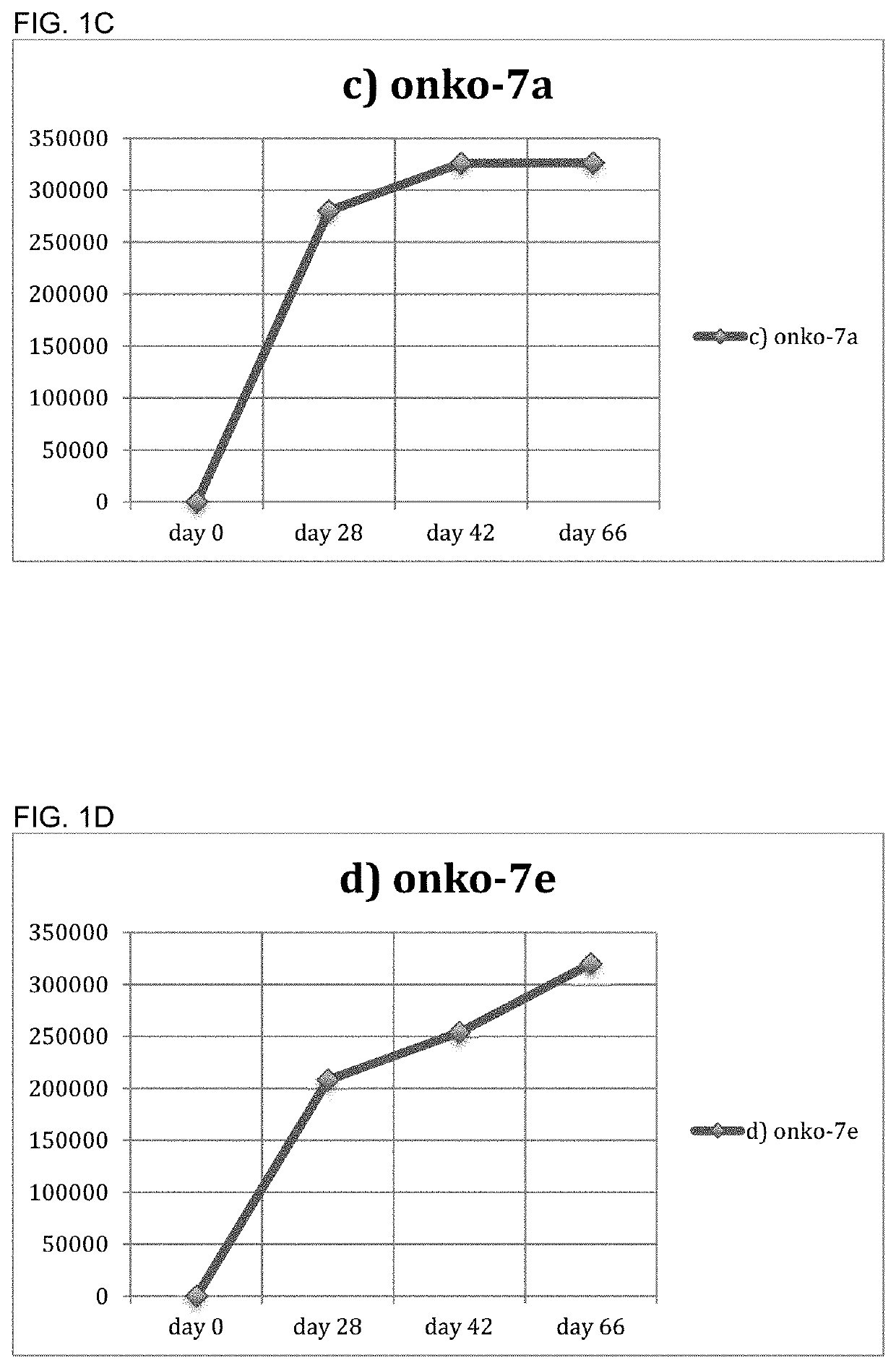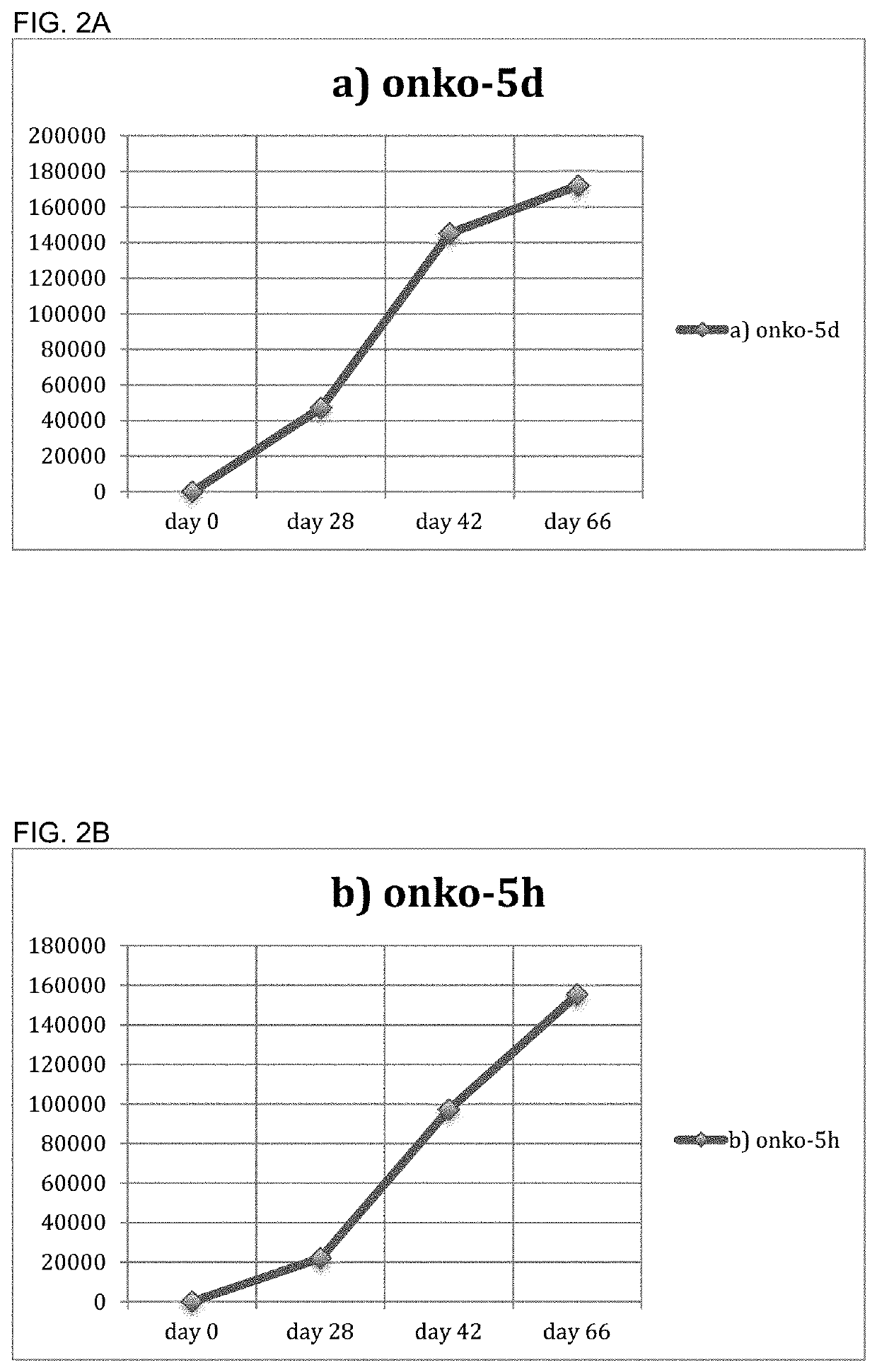Composition of tumor-associated proliferative peptides and related Anti-cancer immunogen for the treatment of lung cancers and other cancers
a tumor-associated proliferative peptide and tumor-associated peptide technology, applied in the field of immunotherapy of cancer, can solve the problems of increasing the mortality of lung cancer every year in china and other major countries, incorrect dual model of lung development, and among the deadliest diseases in the world
- Summary
- Abstract
- Description
- Claims
- Application Information
AI Technical Summary
Benefits of technology
Problems solved by technology
Method used
Image
Examples
example 1
[0135]The conjugate may be characterized as to immunomimic peptide content by a number of methods known to those skilled in the art including weight gain, amino acid analysis, etc. Conjugates of peptides Onko-5a and Onko-7a to TT produced by these methods were determined by amino acid analysis to have 10-30 moles of peptide per 104-106 MW of TT and all were considered suitable as immunogens for immunization of test animals.
[0136]Similarly, TT conjugates of Onko-5a and Onko-7a, were prepared in the same manner to determine ELISA titers using huGRP peptide as the substrate for assay of antibody binding.
example 2
[0137]The peptide-TT conjugates of Example 1 were administered in emulsions of aqueous and oily phase components that were prepared as follows. The conjugate and adjuvant were dissolved in phosphate buffered saline (PBS) to produce the aqueous phase. The aqueous phase is prepared so that the concentrations of conjugate are double the concentration that these components will have in the final emulsion. In order to prepare the immunogens used in Example 4 below, the conjugate was dissolved in PBS, pH 6.5-8.0, to a concentration of 5-12 mg / ml. (Indeed it can be over this broad range, and we use it to control extent of carrier we want conjugated).
[0138]The aqueous phase was combined 1:1 (vol:vol) with the oily vehicle phase to create an emulsion that comprised the final immunogen formulation. One such vehicle is a mixture of 20-60 parts squalene, 70-30 parts squalane, 2-12 parts sorbitan monooleate, 0.6-2.0 parts alpha-tocopherol, 0.1-1 parts Polysorbate 80, and 0.2-1.2 parts Polysorbat...
example 3
[0139]The inventors constructed conjugates comprising each of the Onko-5a and Onko-7a peptides listed in Example I linked to TT and DT, as described in Examples 1 and 2. They then immunized six mice with the peptide Onko-5a immunogen (FIG. 1A and FIG. 1B) and six mice with the peptide Onko-7a immunogen (FIG. 1C and FIG. 1D).
PUM
| Property | Measurement | Unit |
|---|---|---|
| Mass | aaaaa | aaaaa |
| Electric potential / voltage | aaaaa | aaaaa |
| Composition | aaaaa | aaaaa |
Abstract
Description
Claims
Application Information
 Login to View More
Login to View More - R&D
- Intellectual Property
- Life Sciences
- Materials
- Tech Scout
- Unparalleled Data Quality
- Higher Quality Content
- 60% Fewer Hallucinations
Browse by: Latest US Patents, China's latest patents, Technical Efficacy Thesaurus, Application Domain, Technology Topic, Popular Technical Reports.
© 2025 PatSnap. All rights reserved.Legal|Privacy policy|Modern Slavery Act Transparency Statement|Sitemap|About US| Contact US: help@patsnap.com



